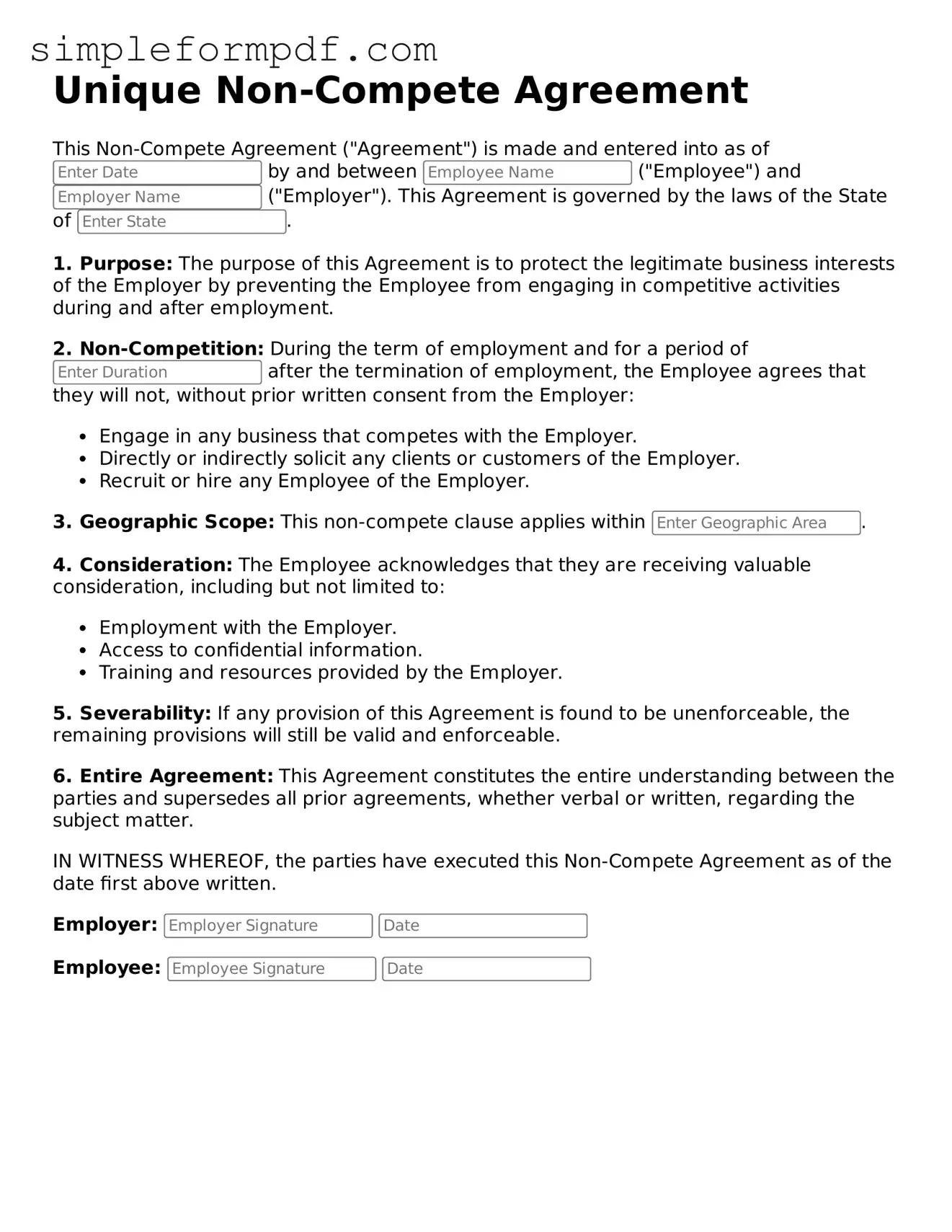Fillable Non-compete Agreement Template
A Non-compete Agreement is a legal document designed to prevent an employee from engaging in competitive activities after leaving a company. This form outlines the terms under which an individual agrees not to enter into competition with their former employer for a specified period and within a defined geographical area. Understanding this agreement is crucial for both employers and employees to protect their interests and maintain fair business practices.
Ready to take the next step? Fill out the Non-compete Agreement form by clicking the button below.
Launch Editor
